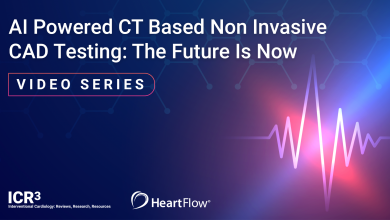Search results
Author(s):
Nikita Lomakin
,
Anna Rudakova
,
Liudmila Buryachkovskaya
,
et al
Added:
3 years ago
Antiplatelet agents are part of secondary prevention following acute coronary syndrome (ACS). Current European and Russian guidelines recommend dual antiplatelet therapy for 1 year after ACS.1,2
Prasugrel is not marketed in Russia, so high-risk patients have been given ticagrelor. The proportion of generic clopidogrel administered has been steadily rising, with the average cost of treatment…
View more
Author(s):
Olusola A Orimoloye
,
Albert D Osei
,
SM Iftekhar Uddin
,
et al
Added:
3 years ago
It often takes time to accumulate enough evidence to deem causal hypotheses plausible truths. Since the introduction of e-cigarettes about a decade ago, studies assessing their potential health effects have resulted in a weak evidence base for causal links to several important clinical outcomes.1 Specifically, according to the National Academies of Science, Engineering, and Medicine’s summary of…
View more
Author(s):
Tim Leiner
,
Susanne Kienbaum
Added:
3 years ago
Peripheral arterial occlusive disease (PAOD) is a major health risk. The prevalence of PAOD varies with the population observed and the screening method used. In epidemiological studies, measurement of the ankle/brachial index (ABI) is recommended for screening (ABI <0.9 indicates PAOD). Surveys in Germany based on the ABI showed a PAOD prevalence of 2.3% among women aged 45–49 years and of 2…
View more
Author(s):
Carsten Schwenke
,
Monica Boos
,
Rainer Hentrich
,
et al
Added:
3 years ago
Since its introduction in 1993,1 contrast-enhanced magnetic resonance angiography (ce-MRA) has been considered the technique of choice for angiographic examination of most regions of the body. This is because of several technical and clinical advantages in comparison with non-contrast-enhanced MRA (nce-MRA) imaging. In this article, we focus on patients with suspected peripheral arterial…
View more
Author(s):
Ramón Luengo-Fernández
Added:
7 months ago
ESC 2023 — Dr Ramón Luengo-Fernández (University of Oxford, UK) joins us on-site to discuss the findings from a registry which aimed to analyse the economic burden of cardiovascular disease within the EU.
This was the first study to utilise Europe-wide patient registries and included the costs of long-term social care. Results from the registry found that cardiovascular disease cost the EU €282…
View more
Foreword
Author(s):
Alberico L Catapano
Added:
3 years ago
Article
Author(s):
Roxy Senior
Added:
3 years ago
Stress echocardiography, which was introduced in the early 1980s, has matured to a reliable cost-effective method for diagnosing and risk-stratifying patients with suspected or known coronary artery disease (CAD). The use of stress echocardiography as the non-invasive method of choice for assessment of CAD has increased exponentially worldwide. In the US alone, approximately three million stress…
View more
AI Powered CT Based Non-invasive CAD Testing
Video Series
Author(s):
David E Allie
,
Chris J Herbert
,
Craig M Walker
Added:
3 years ago
Despite the recent introduction of vascular closure device (VCD) technology, vascular access site complications remain the leading source of morbidity and costs after the approximately eight to eight-and-a-half million percutaneous catheter-based procedures performed annually worldwide.1 VCD trials consistently demonstrate increased patient satisfaction, early ambulation, and decreased hospital…
View more













